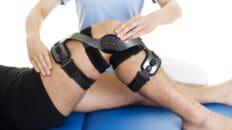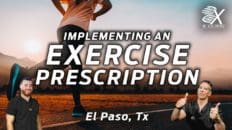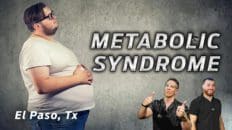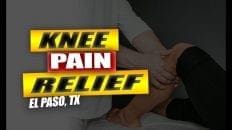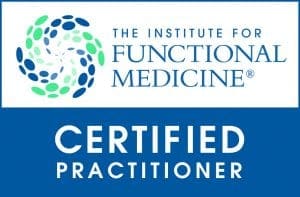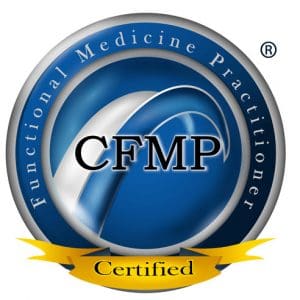Discover effective solutions through chiropractic care for carpal tunnel syndrome to regain comfort and functionality.
Table of Contents
Understanding Carpal Tunnel Syndrome: How Chiropractic Care Can Help Relieve Numbness and Tingling
If you’ve ever felt a strange tingling in your hands, like your fingers are throwing a tiny sparkler party without your permission, or experienced numbness that makes you question if your hand is still attached, you might be dealing with carpal tunnel syndrome (CTS). This pesky condition can make everyday tasks like typing, gripping a coffee mug, or even texting your best friend feel like a Herculean effort. But don’t worry—there’s hope! Chiropractic care, especially from experts like Dr. Alexander Jimenez, DC, APRN, FNP-BC, in El Paso, Texas, can help you wave goodbye to those annoying symptoms. In this comprehensive guide, we’ll dive into what carpal tunnel syndrome is, why it happens, how it’s linked to your neck (yes, your neck!), and how chiropractic care can be your superhero sidekick in reducing symptoms and improving your quality of life. Plus, we’ll sprinkle in some practical tips and a dash of humor to keep things light—because who said learning about health has to be dull?
What Is Carpal Tunnel Syndrome?
Carpal tunnel syndrome is like the grumpy gatekeeper of your wrist, causing pain, numbness, and tingling in your hand and fingers. It happens when the median nerve, which runs from your forearm to your hand through a narrow passage called the carpal tunnel, gets compressed or irritated. This nerve is responsible for sensation in your thumb, index, middle, and part of your ring finger, so when it’s squeezed, you might feel like your hand is staging a mini rebellion.
Symptoms often start subtly, like a faint tingling at night (think of it as your hand whispering, “Hey, something’s not right!”). Over time, it can escalate to pain, weakness, or even difficulty holding objects. Imagine trying to open a pickle jar when your hand feels like it’s on a coffee break—that’s CTS in action.
According to research, CTS is the most common entrapment neuropathy, affecting about 3-6% of the general population (Sevy & Varacallo, 2023). It’s especially common in people who perform repetitive hand movements, like typing or assembly-line work, but other factors can play a role too, which we’ll explore later.
References
- Sevy, J. O., & Varacallo, M. (2023). Carpal tunnel syndrome. StatPearls Publishing. https://pubmed.ncbi.nlm.nih.gov/28846321/
Why Does Carpal Tunnel Syndrome Happen? The Risk Factors
Carpal tunnel syndrome doesn’t just pop up out of nowhere—it’s often the result of a mix of factors that gang up on your median nerve like a group of mischievous kids. Here are the key culprits:
- Repetitive Hand Movements: If your job or hobby involves repetitive motions like typing, knitting, or playing an instrument, your wrist is basically doing the same dance move over and over. This can irritate the carpal tunnel and compress the median nerve (Ibrahim et al., 2012).
- Wrist Injuries or Trauma: A sprain, fracture, or even a car accident can swell the tissues in your wrist, putting pressure on the nerve. Think of it like a traffic jam in your wrist—everything gets backed up.
- Anatomical Factors: Some people are born with a narrower carpal tunnel, making it easier for the nerve to get squished. It’s like trying to fit a big suitcase through a tiny doorway.
- Medical Conditions: Conditions like diabetes, rheumatoid arthritis, hypothyroidism, or pregnancy can increase swelling or inflammation in the wrist, contributing to CTS. For example, pregnancy can cause fluid retention, turning your carpal tunnel into a waterlogged alley (Padua et al., 2023).
- Obesity and Lifestyle Factors: Extra body weight can increase pressure on nerves and tissues, raising the risk of CTS. Poor ergonomics, like hunching over a desk, can also make things worse (Pourmemari & Shiri, 2016).
- Gender and Age: Women are more likely to develop CTS than men, possibly due to smaller wrist anatomy or hormonal changes. It’s also more common in middle-aged or older adults, as wear and tear accumulates over time (Atroshi et al., 1999).
- Vibration Exposure: Using vibrating tools, like jackhammers or drills, can irritate the median nerve over time, especially in jobs like construction (Palmer et al., 2007).
These risk factors often overlap, creating a perfect storm for CTS. For instance, a typist with diabetes who’s also pregnant might feel like their hands are staging a full-on protest. Understanding these factors is key to preventing and managing symptoms.
References
- Atroshi, I., Gummesson, C., Johnsson, R., Ornstein, E., Ranstam, J., & Rosén, I. (1999). Prevalence of carpal tunnel syndrome in a general population. JAMA, 282(2), 153-158. https://pubmed.ncbi.nlm.nih.gov/10411196/
- Ibrahim, I., Khan, W. S., Goddard, N., & Smitham, P. (2012). Carpal tunnel syndrome: A review of the recent literature. The Open Orthopaedics Journal, 6, 69-76. https://pubmed.ncbi.nlm.nih.gov/22470412/
- Padua, L., Coraci, D., Erra, C., Pazzaglia, C., Paolasso, I., Loreti, C., … & Hobson-Webb, L. D. (2023). Carpal tunnel syndrome: Clinical features, diagnosis, and management. The Lancet Neurology, 15(12), 1273-1284. https://pubmed.ncbi.nlm.nih.gov/37461179/
- Palmer, K. T., Harris, E. C., & Coggon, D. (2007). Carpal tunnel syndrome and its relation to occupation: A systematic literature review. Occupational Medicine, 57(1), 57-66. https://pubmed.ncbi.nlm.nih.gov/17082593/
- Pourmemari, M. H., & Shiri, R. (2016). Diabetes as a risk factor for carpal tunnel syndrome: A systematic review and meta-analysis. Diabetic Medicine, 33(1), 10-16. https://pubmed.ncbi.nlm.nih.gov/26073717/
The Surprising Connection: Your Cervical Spine and Hand Symptoms
Now, here’s where things get interesting. You might think carpal tunnel syndrome is all about your wrist, but your neck—yes, your cervical spine—can be a sneaky accomplice. The nerves that control your hands don’t just magically appear in your wrist; they start in your neck and travel down through your shoulder, arm, and forearm. If something’s off in your cervical spine, it can cause or worsen symptoms that mimic or contribute to CTS.
How the Cervical Spine Plays a Role
Your cervical spine (the neck part of your spine) houses nerve roots that form the median nerve. If these nerves get irritated or compressed due to misaligned vertebrae, tight muscles, or a pinched nerve, you might feel tingling or numbness in your hands. This is called cervical radiculopathy, and it can look a lot like CTS (Rodine & Vernon, 2012). For example:
- Spinal Misalignments: If your neck vertebrae are out of alignment (like a stack of books that’s slightly off-kilter), they can press on nerve roots, sending wonky signals to your hands.
- Tight Muscles: The scalene muscles in your neck can tighten and compress nerves, leading to a condition called thoracic outlet syndrome, which can mimic CTS symptoms (Jones et al., 2019).
- Herniated Discs: A bulging disc in your neck can press on nerves, causing pain or tingling that radiates down to your fingers.
Dr. Alexander Jimenez, a chiropractor and functional medicine expert in El Paso, explains that many patients with hand numbness initially diagnosed with CTS actually have issues stemming from their neck. A thorough examination can reveal whether the problem is in the wrist, the neck, or both, ensuring the right treatment plan (Jimenez, 2016a).
Why This Matters
Misdiagnosing CTS when the issue is in your neck is like treating a headache with foot cream—it won’t fix the root cause. Chiropractors like Dr. Jimenez use advanced imaging and diagnostic evaluations to pinpoint whether your symptoms are from the carpal tunnel, the cervical spine, or a combination of both. This dual-scope approach ensures you’re not just masking symptoms but addressing the underlying problem.
References
- Jimenez, A. (2016a). Numbness and tingling on hands. El Paso Chiropractor Blog. https://www.elpasochiropractorblog.com/2016/05/numbness-tingling-on-hands.html
- Jones, M. R., Prabhakar, A., Viswanath, O., Urits, I., Green, J. B., Kendrick, J. B., … & Kaye, A. D. (2019). Thoracic outlet syndrome: A comprehensive review of pathophysiology, diagnosis, and treatment. Pain and Therapy, 8(1), 5-18. https://pubmed.ncbi.nlm.nih.gov/33855879/
- Rodine, R. J., & Vernon, H. (2012). Cervical radiculopathy: A systematic review on treatment by spinal manipulation and measurement with the Neck Disability Index. Journal of the Canadian Chiropractic Association, 56(1), 18-28. https://pubmed.ncbi.nlm.nih.gov/22457536/
How Chiropractic Care Can Help with Carpal Tunnel Syndrome
Chiropractic care is like a Swiss Army knife for your nervous system—it’s versatile, non-invasive, and gets to the root of the problem. Here’s how it can help reduce the symptoms of CTS and its overlapping risk profiles:
1. Spinal Adjustments for Nerve Relief
Chiropractors focus on aligning the spine to remove nerve interference. If your cervical spine is misaligned, gentle adjustments can free up pinched nerves, improving communication between your brain and hands. This can reduce tingling and numbness, even if the problem isn’t entirely in your wrist (Bolar, 2018). Dr. Jimenez uses precise techniques to realign the spine, ensuring smooth blood flow and nerve signals, like unclogging a traffic jam.
2. Wrist and Arm Adjustments
For true CTS cases, chiropractors can perform adjustments to the wrist, elbow, and shoulder to relieve pressure on the median nerve. These adjustments are gentle and targeted, like tuning a guitar to get the perfect pitch. Research shows that manual therapies, including chiropractic adjustments, can be as effective as surgery for mild to moderate CTS after just a few weeks (Fernandez-de-Las-Penas et al., 2022).
3. Reducing Inflammation
Chiropractors may recommend icing the wrist or using stabilizing braces to reduce inflammation and support healing. Think of it as giving your wrist a cozy ice pack hug to calm things down. Dr. Jimenez often suggests these simple remedies alongside adjustments to maximize relief (Jimenez, 2016b).
4. Addressing Overlapping Risk Profiles
CTS often comes with friends like diabetes, obesity, or repetitive strain injuries, which can amplify symptoms. Chiropractic care takes a holistic approach, addressing these risk factors by:
- Improving Posture: Poor posture can strain your neck and wrists, worsening CTS. Chiropractors teach ergonomic techniques to keep your spine and joints happy.
- Lifestyle Advice: Dr. Jimenez emphasizes small changes, like adjusting your workspace or taking breaks from repetitive tasks, to reduce strain (HealthVoice360, n.d.).
- Whole-Body Wellness: By optimizing nerve function and reducing inflammation, chiropractic care supports overall health, which can mitigate conditions like diabetes that contribute to CTS.
5. Preventing Surgery
For many patients, chiropractic care can prevent the need for invasive procedures like carpal tunnel release surgery. Studies suggest that conservative treatments, including chiropractic, can provide significant relief without the risks of surgery (Perezde Leon & Auyong, 2002).
By addressing both the wrist and cervical spine, chiropractic care tackles CTS from multiple angles, offering a comprehensive solution that’s like giving your nervous system a full-body tune-up.
References
- Bolar, R. (2018). If you experience numbness or tingling, chiropractic can help. Vital Life Chiropractic. https://livingvitallife.com
- Fernandez-de-Las-Penas, C., Cleland, J. A., Plaza-Manzano, G., Ortega-Santiago, R., & Arias-Buria, J. L. (2022). Physiotherapy and sports therapeutic interventions for treatment of carpal tunnel syndrome: A systematic review. Journal of Clinical Medicine, 11(5), 1321. https://pubmed.ncbi.nlm.nih.gov/35286465/
- HealthVoice360. (n.d.). Dr. Alexander Jimenez. https://healthvoice360.com/
- Jimenez, A. (2016b). Chiropractic treatment for carpal tunnel syndrome. El Paso Chiropractor Blog. https://www.elpasochiropractorblog.com/2016/05/chiropractic-treatment-for-carpal.html
- Perezde Leon, R., & Auyong, S. (2002). Chiropractic manipulative therapy of carpal tunnel syndrome. Journal of Manipulative and Physiological Therapeutics, 25(2), 104-108. https://pubmed.ncbi.nlm.nih.gov/11807347/
Discovering The Benefits of Chiropractic Care- Video
Dr. Alexander Jimenez: El Paso’s Go-To Expert for CTS and Personal Injury
If you’re in El Paso, Texas, and dealing with CTS or numbness from a personal injury, Dr. Alexander Jimenez is your guy. With his credentials as a Doctor of Chiropractic, Advanced Practice Registered Nurse, and Family Nurse Practitioner-Board Certified, he’s like the Avengers of healthcare—bringing multiple skills to the table. Dr. Jimenez specializes in functional medicine and chiropractic care, offering a unique blend of expertise to help patients recover from CTS and other injuries.
Why Dr. Jimenez Stands Out
Dr. Jimenez doesn’t just treat symptoms; he digs deep to find the cause, whether it’s a pinched nerve in your neck or inflammation in your wrist. His approach includes:
- Advanced Imaging: Using X-rays, MRIs, or other imaging, he pinpoints the exact source of nerve compression, ensuring accurate diagnosis (Jimenez, 2018).
- Diagnostic Evaluations: He conducts thorough physical exams to assess nerve function and rule out conditions like cervical radiculopathy or thoracic outlet syndrome.
- Dual-Scope Procedures: Dr. Jimenez combines chiropractic adjustments with functional medicine insights, addressing both structural and systemic issues.
For personal injury cases, like those from car accidents, Dr. Jimenez is a trusted practitioner in El Paso. He acts as a liaison between medical care and legal documentation, helping patients navigate the complex world of injury claims. If you’ve been in a crash and your hands are tingling like they’re auditioning for a sci-fi movie, Dr. Jimenez can connect your symptoms to the injury, provide treatment, and document everything for your case. This is crucial, as nerve injuries from accidents can be serious and require prompt attention (Correll Law Firm, 2022).
References
- Correll Law Firm. (2022). Numbness or tingling in your fingers after a car accident (and why it’s serious!). https://correllfirm.com
- Jimenez, A. (2018). (CTS) Carpal tunnel syndrome: 3 ways chiropractic can help in El Paso, TX. https://dralexjimenez.com
Practical Tips to Manage and Prevent Carpal Tunnel Syndrome
You don’t have to wait for CTS to throw a full-blown tantrum before taking action. Dr. Jimenez shares some simple changes you can make to your daily routine to keep your wrists and nerves happy:
- Ergonomic Workspace: Adjust your desk, chair, and keyboard to keep your wrists in a neutral position. Imagine your hands floating gently on the keyboard, not doing a dramatic swan dive.
- Take Breaks: If you’re typing or doing repetitive tasks, take a 5-minute break every hour to stretch your hands and wrists. Think of it as giving your hands a quick coffee break.
- Wrist Exercises: Try gentle wrist stretches, like flexing and extending your fingers or rotating your wrists. It’s like yoga for your hands—namaste, median nerve!
- Use a Brace: Wearing a wrist splint at night can keep your wrist in a neutral position, preventing it from curling up like a grumpy cat while you sleep.
- Stay Hydrated and Eat Well: Proper nutrition supports nerve health. Foods rich in B vitamins, magnesium, and potassium can keep your nerves humming happily (BuzzRx, 2023).
- Maintain a Healthy Weight: Reducing excess weight can lower pressure on your nerves and improve overall health, reducing CTS risk.
- Ice It: If your wrist feels inflamed, apply an ice pack for 10-15 minutes. It’s like giving your wrist a cool, refreshing smoothie.
By incorporating these habits, you can reduce strain on your wrists and neck, potentially preventing CTS from crashing your daily party.
References
- BuzzRx. (2023). Numbness or tingling in hands: Causes & treatments. https://www.buzzrx.com
The Importance of Personal Injury Care in El Paso
El Paso is a bustling city, and unfortunately, accidents happen—whether it’s a fender-bender on I-10 or a slip-and-fall at the mall. Numbness and tingling after an accident can signal nerve damage, which is why seeing a chiropractor like Dr. Jimenez is critical. His expertise in personal injury cases makes him a go-to practitioner for victims seeking relief and justice.
Dr. Jimenez’s dual-scope approach combines chiropractic care with advanced diagnostics, ensuring that injuries are thoroughly evaluated and treated. He also provides detailed medical documentation, which is essential for personal injury claims. This documentation links your symptoms (like hand numbness) to the accident, strengthening your case with insurers or in court. His work as a liaison between medical and legal systems ensures you get the care you need while protecting your rights (Jimenez, 2018).
References
- Jimenez, A. (2018). (CTS) Carpal tunnel syndrome: 3 ways chiropractic can help in El Paso, TX. https://dralexjimenez.com
The Science Behind Chiropractic Care for CTS
Let’s get a bit nerdy (but not too nerdy) and look at why chiropractic care works for CTS. The nervous system is like the body’s electrical wiring, and when there’s a short circuit (like a pinched nerve), you get symptoms like numbness and tingling. Chiropractic adjustments restore proper alignment, reducing pressure on nerves and improving blood flow. This is backed by research showing that spinal manipulation can improve nerve function and reduce symptoms in conditions like CTS and cervical radiculopathy (Shreeve & La Rose, 2011).
For CTS specifically, adjustments to the wrist and elbow can directly relieve pressure on the median nerve, while cervical adjustments address upstream issues in the neck. Combine this with lifestyle changes, and you’ve got a recipe for relief that doesn’t involve scalpels or pills. Dr. Jimenez’s holistic approach, rooted in functional medicine, also considers factors like inflammation and systemic health, making his treatments a one-two punch against CTS.
References
- Shreeve, M. W., & La Rose, J. R. (2011). Chiropractic care of a patient with thoracic outlet syndrome and arrhythmia. Journal of Chiropractic Medicine, 10(2), 130-134. https://pubmed.ncbi.nlm.nih.gov/22014907/
A Day in the Life: Managing CTS with Chiropractic Care
Imagine waking up without that annoying tingle in your fingers. With chiropractic care, that’s not just a dream—it’s a possibility. Here’s what a typical treatment plan with Dr. Jimenez might look like:
- Initial Visit: You’ll get a thorough exam, possibly including X-rays or nerve conduction studies, to confirm whether it’s CTS, a neck issue, or both.
- Adjustments: Gentle spinal and wrist adjustments to relieve nerve pressure, done with the precision of a chef seasoning a dish.
- Therapy and Exercises: Dr. Jimenez might prescribe wrist stretches, icing, or a brace to support healing.
- Follow-Ups: Regular visits to monitor progress and tweak your plan, ensuring long-term relief.
Patients often report feeling better after just a few sessions, with reduced tingling and improved grip strength. It’s like giving your hands a new lease on life!
Conclusion
Carpal tunnel syndrome can be a real pain in the wrist (pun intended), but with chiropractic care from experts like Dr. Alexander Jimenez in El Paso, Texas, you can find relief without resorting to surgery or medications. By addressing the root causes—whether in the wrist, neck, or both—chiropractic care tackles the overlapping risk factors of CTS, from repetitive strain to systemic conditions like diabetes. Dr. Jimenez’s unique blend of chiropractic expertise, functional medicine, and personal injury knowledge makes him a trusted ally for those dealing with numbness, tingling, or accident-related injuries.
Disclaimer: This blog post is for informational purposes only and should not be taken as medical advice. Always consult a qualified healthcare provider, such as a chiropractor or physician, before starting any treatment for carpal tunnel syndrome or related conditions. The information provided is based on current research and clinical insights but is not a substitute for professional medical evaluation.
Full References
- Atroshi, I., Gummesson, C., Johnsson, R., Ornstein, E., Ranstam, J., & Rosén, I. (1999). Prevalence of carpal tunnel syndrome in a general population. JAMA, 282(2), 153-158. https://pubmed.ncbi.nlm.nih.gov/10411196/
- Bolar, R. (2018). If you experience numbness or tingling, chiropractic can help. Vital Life Chiropractic. https://livingvitallife.com
- BuzzRx. (2023). Numbness or tingling in hands: Causes & treatments. https://www.buzzrx.com
- Correll Law Firm. (2022). Numbness or tingling in your fingers after a car accident (and why it’s serious!). https://correllfirm.com
- Fernandez-de-Las-Penas, C., Cleland, J. A., Plaza-Manzano, G., Ortega-Santiago, R., & Arias-Buria, J. L. (2022). Physiotherapy and sports therapeutic interventions for treatment of carpal tunnel syndrome: A systematic review. Journal of Clinical Medicine, 11(5), 1321. https://pubmed.ncbi.nlm.nih.gov/35286465/
- HealthVoice360. (n.d.). Dr. Alexander Jimenez. https://healthvoice360.com/
- Ibrahim, I., Khan, W. S., Goddard, N., & Smitham, P. (2012). Carpal tunnel syndrome: A review of the recent literature. The Open Orthopaedics Journal, 6, 69-76. https://pubmed.ncbi.nlm.nih.gov/22470412/
- Jimenez, A. (2016a). Numbness and tingling on hands. El Paso Chiropractor Blog. https://www.elpasochiropractorblog.com/2016/05/numbness-tingling-on-hands.html
- Jimenez, A. (2016b). Chiropractic treatment for carpal tunnel syndrome. El Paso Chiropractor Blog. https://www.elpasochiropractorblog.com/2016/05/chiropractic-treatment-for-carpal.html
- Jimenez, A. (2018). (CTS) Carpal tunnel syndrome: 3 ways chiropractic can help in El Paso, TX. https://dralexjimenez.com
- Jones, M. R., Prabhakar, A., Viswanath, O., Urits, I., Green, J. B., Kendrick, J. B., … & Kaye, A. D. (2019). Thoracic outlet syndrome: A comprehensive review of pathophysiology, diagnosis, and treatment. Pain and Therapy, 8(1), 5-18. https://pubmed.ncbi.nlm.nih.gov/33855879/
- Padua, L., Coraci, D., Erra, C., Pazzaglia, C., Paolasso, I., Loreti, C., … & Hobson-Webb, L. D. (2023). Carpal tunnel syndrome: Clinical features, diagnosis, and management. The Lancet Neurology, 15(12), 1273-1284. https://pubmed.ncbi.nlm.nih.gov/37461179/
- Palmer, K. T., Harris, E. C., & Coggon, D. (2007). Carpal tunnel syndrome and its relation to occupation: A systematic literature review. Occupational Medicine, 57(1), 57-66. https://pubmed.ncbi.nlm.nih.gov/17082593/
- Perezde Leon, R., & Auyong, S. (2002). Chiropractic manipulative therapy of carpal tunnel syndrome. Journal of Manipulative and Physiological Therapeutics, 25(2), 104-108. https://pubmed.ncbi.nlm.nih.gov/11807347/
- Rodine, R. J., & Vernon, H. (2012). Cervical radiculopathy: A systematic review on treatment by spinal manipulation and measurement with the Neck Disability Index. Journal of the Canadian Chiropractic Association, 56(1), 18-28. https://pubmed.ncbi.nlm.nih.gov/22457536/
- Sevy, J. O., & Varacallo, M. (2023). Carpal tunnel syndrome. StatPearls Publishing. https://pubmed.ncbi.nlm.nih.gov/28846321/
- Shreeve, M. W., & La Rose, J. R. (2011). Chiropractic care of a patient with thoracic outlet syndrome and arrhythmia. Journal of Chiropractic Medicine, 10(2), 130-134. https://pubmed.ncbi.nlm.nih.gov/22014907/
General Disclaimer
Professional Scope of Practice *
The information herein on "Chiropractic Care and Relief from Carpal Tunnel Syndrome" is not intended to replace a one-on-one relationship with a qualified health care professional or licensed physician and is not medical advice. We encourage you to make healthcare decisions based on your research and partnership with a qualified healthcare professional.
Blog Information & Scope Discussions
Welcome to El Paso's Premier Wellness and Injury Care Clinic & Wellness Blog, where Dr. Alex Jimenez, DC, FNP-C, a Multi-State board-certified Family Practice Nurse Practitioner (FNP-BC) and Chiropractor (DC), presents insights on how our multidisciplinary team is dedicated to holistic healing and personalized care. Our practice aligns with evidence-based treatment protocols inspired by integrative medicine principles, similar to those found on this site and our family practice-based chiromed.com site, focusing on restoring health naturally for patients of all ages.
Our areas of multidisciplinary practice include Wellness & Nutrition, Chronic Pain, Personal Injury, Auto Accident Care, Work Injuries, Back Injury, Low Back Pain, Neck Pain, Migraine Headaches, Sports Injuries, Severe Sciatica, Scoliosis, Complex Herniated Discs, Fibromyalgia, Chronic Pain, Complex Injuries, Stress Management, Functional Medicine Treatments, and in-scope care protocols.
Our information scope is multidisciplinary, focusing on musculoskeletal and physical medicine, wellness, contributing etiological viscerosomatic disturbances within clinical presentations, associated somato-visceral reflex clinical dynamics, subluxation complexes, sensitive health issues, and functional medicine articles, topics, and discussions.
We provide and present clinical collaboration with specialists from various disciplines. Each specialist is governed by their professional scope of practice and their jurisdiction of licensure. We use functional health & wellness protocols to treat and support care for musculoskeletal injuries or disorders.
Our videos, posts, topics, and insights address clinical matters and issues that are directly or indirectly related to our clinical scope of practice.
Our office has made a reasonable effort to provide supportive citations and has identified relevant research studies that support our posts. We provide copies of supporting research studies upon request to regulatory boards and the public.
We understand that we cover matters that require an additional explanation of how they may assist in a particular care plan or treatment protocol; therefore, to discuss the subject matter above further, please feel free to ask Dr. Alex Jimenez, DC, APRN, FNP-BC, or contact us at 915-850-0900.
We are here to help you and your family.
Blessings
Dr. Alex Jimenez DC, MSACP, APRN, FNP-BC*, CCST, IFMCP, CFMP, ATN
email: coach@elpasofunctionalmedicine.com
Multidisciplinary Licensing & Board Certifications:
Licensed as a Doctor of Chiropractic (DC) in Texas & New Mexico*
Texas DC License #: TX5807, Verified: TX5807
New Mexico DC License #: NM-DC2182, Verified: NM-DC2182
Multi-State Advanced Practice Registered Nurse (APRN*) in Texas & Multistate
Multistate Compact RN License by Endorsement (42 States)
Texas APRN License #: 1191402, Verified: 1191402 *
Florida APRN License #: 11043890, Verified: APRN11043890 *
* Prescriptive Authority Authorized
ANCC FNP-BC: Board Certified Nurse Practitioner*
Compact Status: Multi-State License: Authorized to Practice in 40 States*
Graduate with Honors: ICHS: MSN-FNP (Family Nurse Practitioner Program)
Degree Granted. Master's in Family Practice MSN Diploma (Cum Laude)
Dr. Alex Jimenez, DC, APRN, FNP-BC*, CFMP, IFMCP, ATN, CCST
My Digital Business Card
RN: Registered Nurse
APRNP: Advanced Practice Registered Nurse
FNP: Family Practice Specialization
DC: Doctor of Chiropractic
CFMP: Certified Functional Medicine Provider
MSN-FNP: Master of Science in Family Practice Medicine
MSACP: Master of Science in Advanced Clinical Practice
IFMCP: Institute of Functional Medicine
CCST: Certified Chiropractic Spinal Trauma
ATN: Advanced Translational Neutrogenomics











